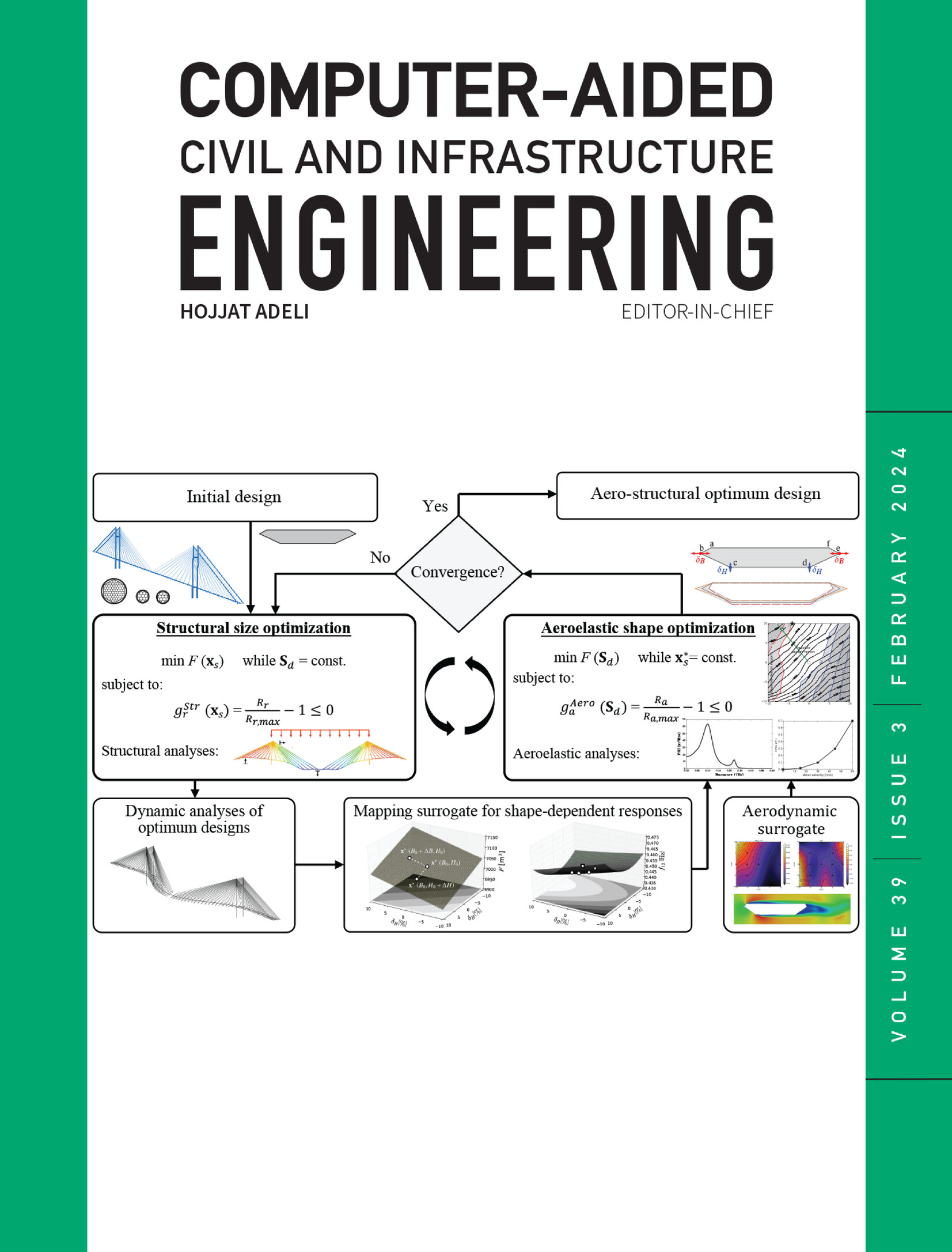Modeling car-following behaviors using a driving style–based Bayesian model averaging Copula framework in mixed traffic flow
IF 8.5
1区 工程技术
Q1 COMPUTER SCIENCE, INTERDISCIPLINARY APPLICATIONS
引用次数: 0
Abstract
As a fundamental driving behavior, the accurate modeling of car-following (CF) dynamics is essential for improving traffic flow and advancing autonomous driving technologies. Due to the stochastic nature of CF behaviors, the CF model parameters often exhibit heterogeneity (multimodal trends), distribution uncertainty, and parameter correlations. Most studies have examined correlations among CF model parameters, assuming deterministic marginal distributions, and investigated heterogeneity through driving behavior indicators. However, distribution uncertainty and multimodal trends in CF model parameter characteristics remain insufficiently explored. To address this challenge, this study proposes a driving style–based Bayesian model averaging Copula (DS-BMAC) framework that simultaneously accounts for heterogeneity, distribution uncertainty, and parameter correlations in CF behavior modeling. Using the intelligent driver model (IDM) as a representative example, its parameters are calibrated using CF trajectory data extracted from the Waymo open motion data set. Based on these calibrated IDM parameters, a multivariate Gaussian mixture model is employed to categorize three distinct driving styles, capturing heterogeneity. Subsequently, a Bayesian model average Copula approach is applied to address distribution uncertainty and parameter correlations. Deterministic and multivehicle ring road simulations were conducted to assess the effectiveness of the proposed DS-BMAC framework. The results demonstrate that the DS-BMAC framework provides a precise characterization of CF model parameters and effectively reproduces microscopic CF behaviors compared to other approaches. Additionally, the DS-BMAC framework offers a realistic representation of traffic flow dynamics. The research findings are valuable for understanding mixed traffic flow dynamics and for developing CF decision-making models for autonomous vehicles and advanced driver-assistance systems.混合交通流中基于驾驶风格的贝叶斯平均Copula模型的跟车行为建模
汽车跟随动力学作为一种基本的驾驶行为,其准确建模对于改善交通流量和推进自动驾驶技术至关重要。由于CF行为的随机性,CF模型参数往往表现出异质性(多模态趋势)、分布不确定性和参数相关性。大多数研究通过假设确定性边际分布来检验CF模型参数之间的相关性,并通过驾驶行为指标来研究异质性。然而,CF模型参数特征的分布不确定性和多模态趋势尚未得到充分探讨。为了解决这一挑战,本研究提出了一个基于驾驶风格的贝叶斯模型平均Copula (DS-BMAC)框架,该框架同时考虑了CF行为建模中的异质性、分布不确定性和参数相关性。以智能驾驶员模型(IDM)为例,使用从Waymo开放运动数据集中提取的CF轨迹数据对其参数进行校准。基于这些标定的IDM参数,采用多元高斯混合模型对三种不同的驾驶风格进行分类,捕捉异质性。随后,采用贝叶斯模型平均Copula方法解决分布不确定性和参数相关性问题。通过确定性和多车辆环形道路模拟来评估所提出的DS-BMAC框架的有效性。结果表明,与其他方法相比,DS-BMAC框架提供了CF模型参数的精确表征,并有效地再现了CF的微观行为。此外,DS-BMAC框架提供了交通流动态的真实表示。研究结果对于理解混合交通流动力学以及开发自动驾驶汽车和高级驾驶员辅助系统的CF决策模型具有重要价值。
本文章由计算机程序翻译,如有差异,请以英文原文为准。
求助全文
约1分钟内获得全文
求助全文
来源期刊
CiteScore
17.60
自引率
19.80%
发文量
146
审稿时长
1 months
期刊介绍:
Computer-Aided Civil and Infrastructure Engineering stands as a scholarly, peer-reviewed archival journal, serving as a vital link between advancements in computer technology and civil and infrastructure engineering. The journal serves as a distinctive platform for the publication of original articles, spotlighting novel computational techniques and inventive applications of computers. Specifically, it concentrates on recent progress in computer and information technologies, fostering the development and application of emerging computing paradigms.
Encompassing a broad scope, the journal addresses bridge, construction, environmental, highway, geotechnical, structural, transportation, and water resources engineering. It extends its reach to the management of infrastructure systems, covering domains such as highways, bridges, pavements, airports, and utilities. The journal delves into areas like artificial intelligence, cognitive modeling, concurrent engineering, database management, distributed computing, evolutionary computing, fuzzy logic, genetic algorithms, geometric modeling, internet-based technologies, knowledge discovery and engineering, machine learning, mobile computing, multimedia technologies, networking, neural network computing, optimization and search, parallel processing, robotics, smart structures, software engineering, virtual reality, and visualization techniques.

 求助内容:
求助内容: 应助结果提醒方式:
应助结果提醒方式:


